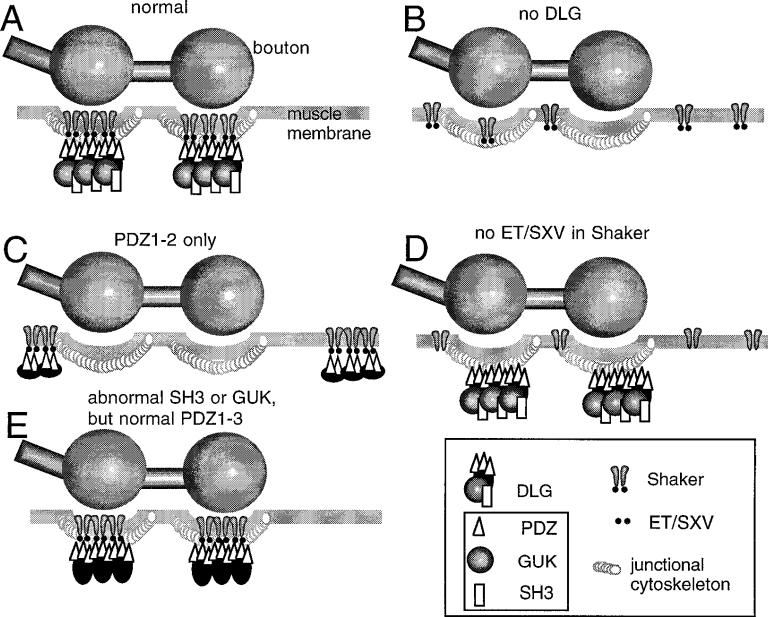Figure 6.
Model of Shaker clustering and Shaker synapse targeting by DLG. A, In wild-type, Shaker channels are clustered at the muscle junctional region by the interaction of their carboxyl–ETDV motif and PDZ1–2 of DLG. B, In the absence of DLG, Shaker channels fail to aggregate at the junction and remain diffusely distributed along the muscle membrane. C, When only PDZ1–2 domains are intact in DLG, Shaker channels are clustered, but at extrajunctional regions of the muscle membrane. D, Lack of ET/SXV motif in Shaker channels prevents their clustering and their localization at the junction even when DLG is normally localized. E, Abnormal SH3 or GUK domains do not prevent Shaker clustering at the junction.

